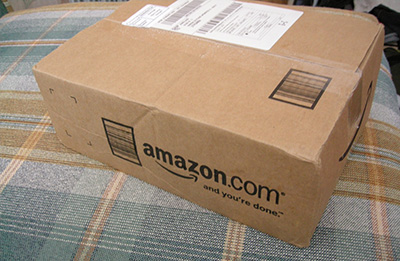Newsroom Notes: Amazon’s Seller Flex will change the way it does business with FedEx, UPS
At its core, Seller Flex is geared toward making more products available with free, two-day delivery while helping to relieve overcrowded warehouses.

Seller Flex, a new delivery service offering from Amazon, received a lot of attention when reports were published in October proclaiming that it could prove to be a major competitive advantage for the e-commerce bellwether in terms of how it negotiates rates with FedEx and UPS.
That’s the thesis developed by James Thomson, a former Amazon executive and now a partner for Buy Box Experts, an Amazon consultancy firm, and author of the book, “The Amazon Marketplace Dilemma.”
At its core, Seller Flex is geared toward making more products available with free, two-day delivery while helping to relieve overcrowded warehouses. According to a Bloomberg report, the initiative will drive Amazon more deeply into services typically handled for the Seattle-based company by UPS and FedEx.
As for how that’s handled with Seller Flex, Amazon will oversee package pickups from the warehouses of third-party merchants selling goods through Amazon.com and deliver to customers’ homes—tasks currently handled for Amazon by the parcel duopoly.
And while Amazon will still use UPS and FedEx for delivery, the report said that Amazon would decide how to send a package, as opposed to leaving that at the discretion of the seller. Among the benefits of handling more deliveries for Amazon are things like providing greater flexibility and control over the last mile to a customer’s homes; saving money through volume discounts; and helping to avoid congestion in Amazon warehouses through keeping merchandise in outside sellers’ facilities.
Other noted benefits include how Seller Flex would provide Amazon with more flexibility into warehousing and delivery operations of merchant partners, with the potential of making full use of their product inventory, storage, space and customer proximity with a quick delivery guarantee.
In a blog posting, Thomson explained that Seller Flex is a big deal for Amazon on multiple fronts: “Seller Flex provides Amazon with additional capacity to ensure that products can be shipped to customers inside their two-day window. Amazon has a problem that they are not keen on discussing externally: Their warehouses are full, which has historically presented a problem during the busy holiday season. Amazon has tried to negate this by scaling storage costs during the busy season and by limiting replenishment of products that go unsold by third party merchants in an effort to optimize warehouse spacing.”
And as for what else Seller Flex offers Amazon, Thomson pointed to things like providing Amazon the opportunity to embed itself into the operations of third-party sellers that are not keen on using Fulfillment by Amazon; providing Amazon the opportunity to create a wider assortment of products that are able to be shipped to customers in the Prime window; and providing Amazon with the ability to further its world-class logistics operations and decrease its reliance on 3PL partners, among others.
it comes to assessing the ultimate impact of
Amazon’s Seller Flex offering. However, one thing
made clear by Thomson is that there is no bigger
disrupter in the market than Amazon—no matter
how you look at it."
As for the impact of SellerFlex on FedEx and UPS, Thomson was straightforward in explaining that FedEx and UPS are the most obvious losers if Seller Flex succeeds.
“Amazon is arguably the largest customer that drives a large part of their revenues,” wrote Thomson. “It provides Amazon with negotiation power to ensure that they get lower rates from these third-party logistics businesses. FedEx and UPS will experience tension with Amazon as they begin to experience fewer products that are shipped via their services. Third-party logistics services and warehouse operators are also losers, as customers are going to experience Amazon doing the same operations for less money.”
There’s a fair amount of the unknown when it comes to assessing the ultimate impact of Amazon’s Seller Flex offering. However, one thing made clear by Thomson is that there is no bigger disrupter in the market than Amazon—no matter how you look at it. It has a wide-ranging playbook, with lots of variation, and Seller Flex has the potential to help Amazon put a lot more points on the board. •

Article Topics
Columns News & Resources
Latest in Materials Handling
Registration open for Pack Expo International 2024 Walmart chooses Swisslog AS/RS and software for third milk processing facility NetLogistik partners with Vuzix subsidiary Moviynt to offer mobility solutions for warehouses Materials Handling Robotics: The new world of heterogeneous robotic integration BSLBATT is looking for new distributors and resellers worldwide Lucas Watson appointed CSO for Körber’s Parcel Logistics business in North America Hyster recognizes Dealers of Distinction for 2023 More Materials HandlingAbout the Author
Subscribe to Materials Handling Magazine

Find out what the world's most innovative companies are doing to improve productivity in their plants and distribution centers.
Start your FREE subscription today.
April 2024 Modern Materials Handling

Latest Resources










